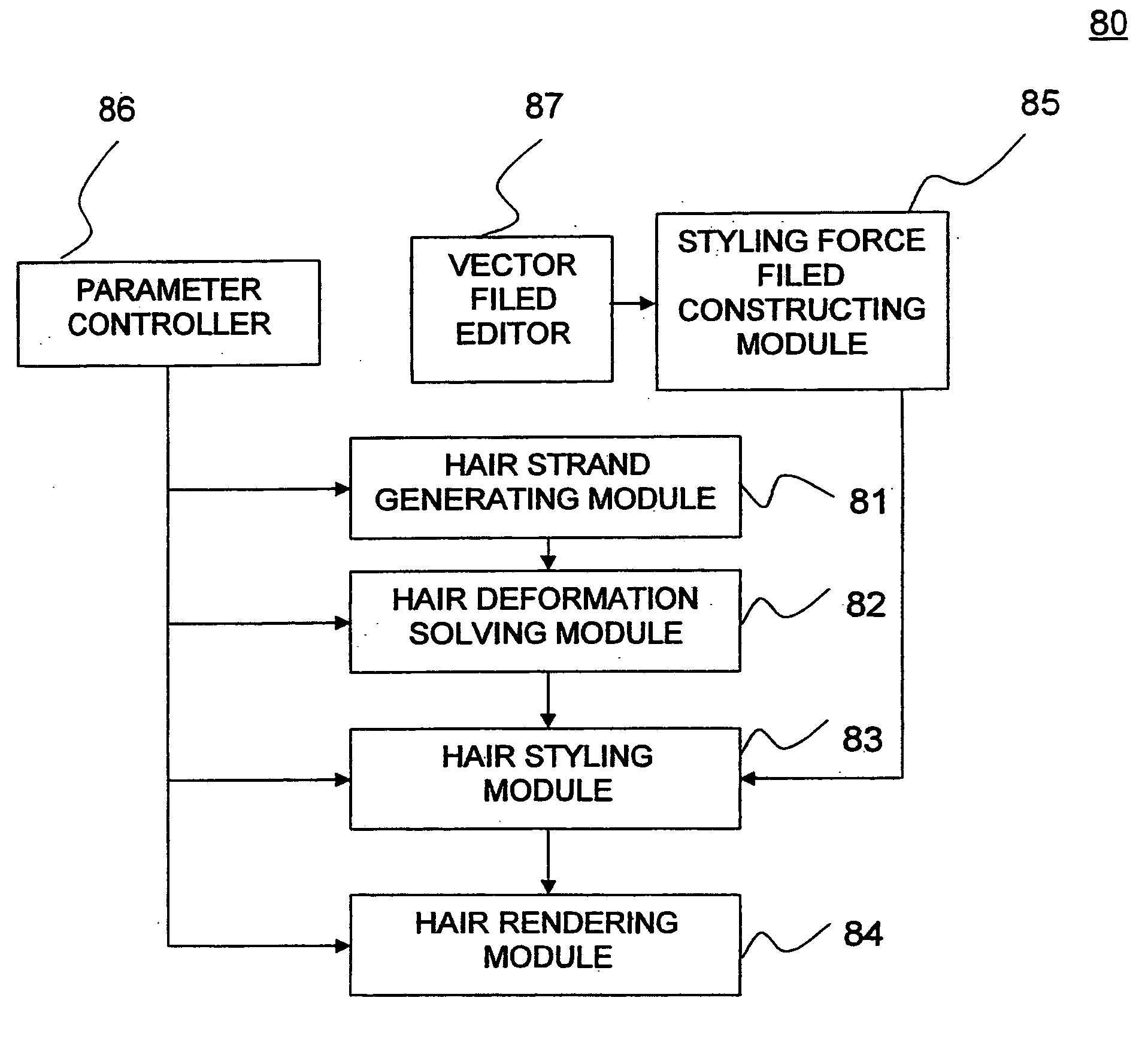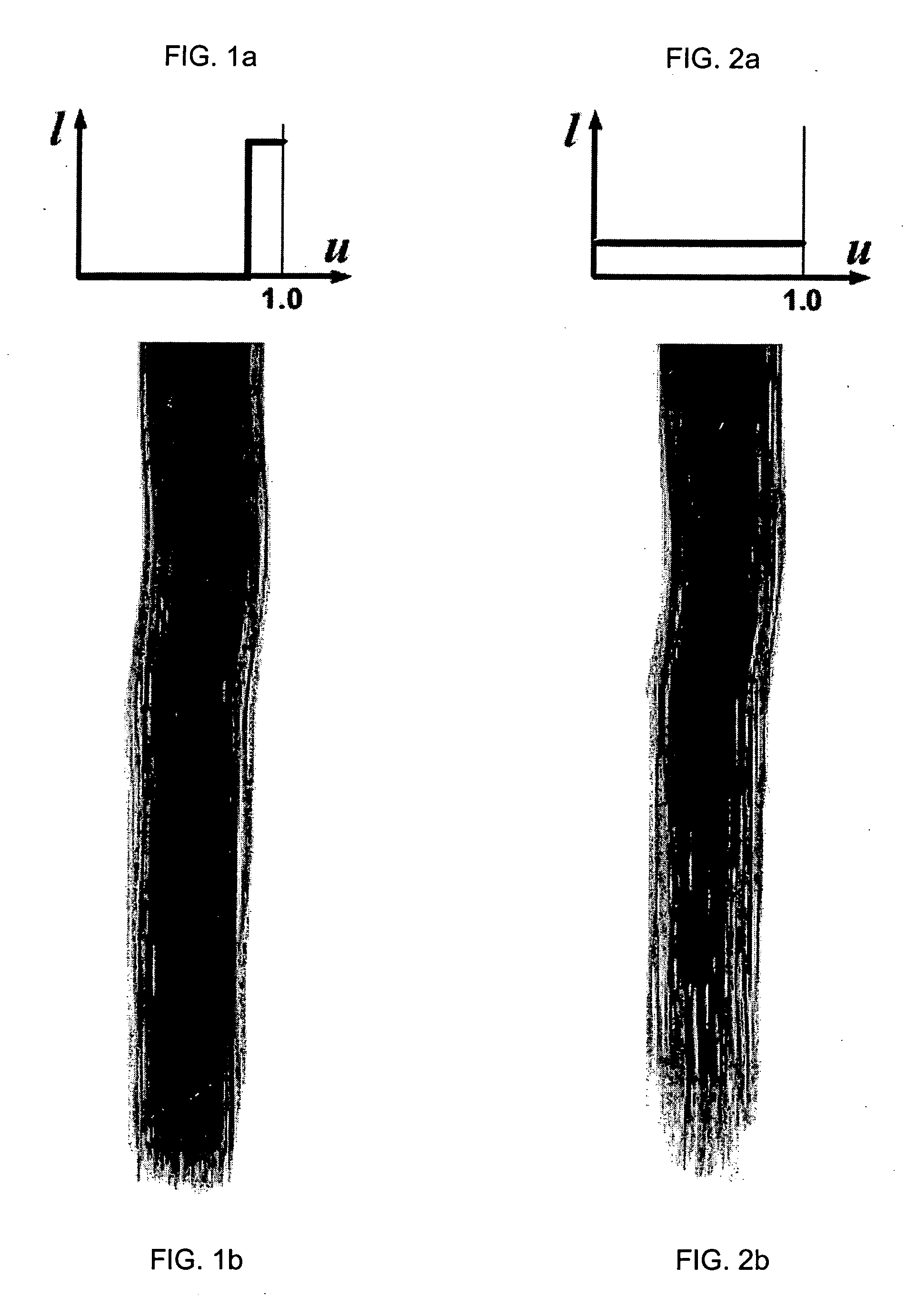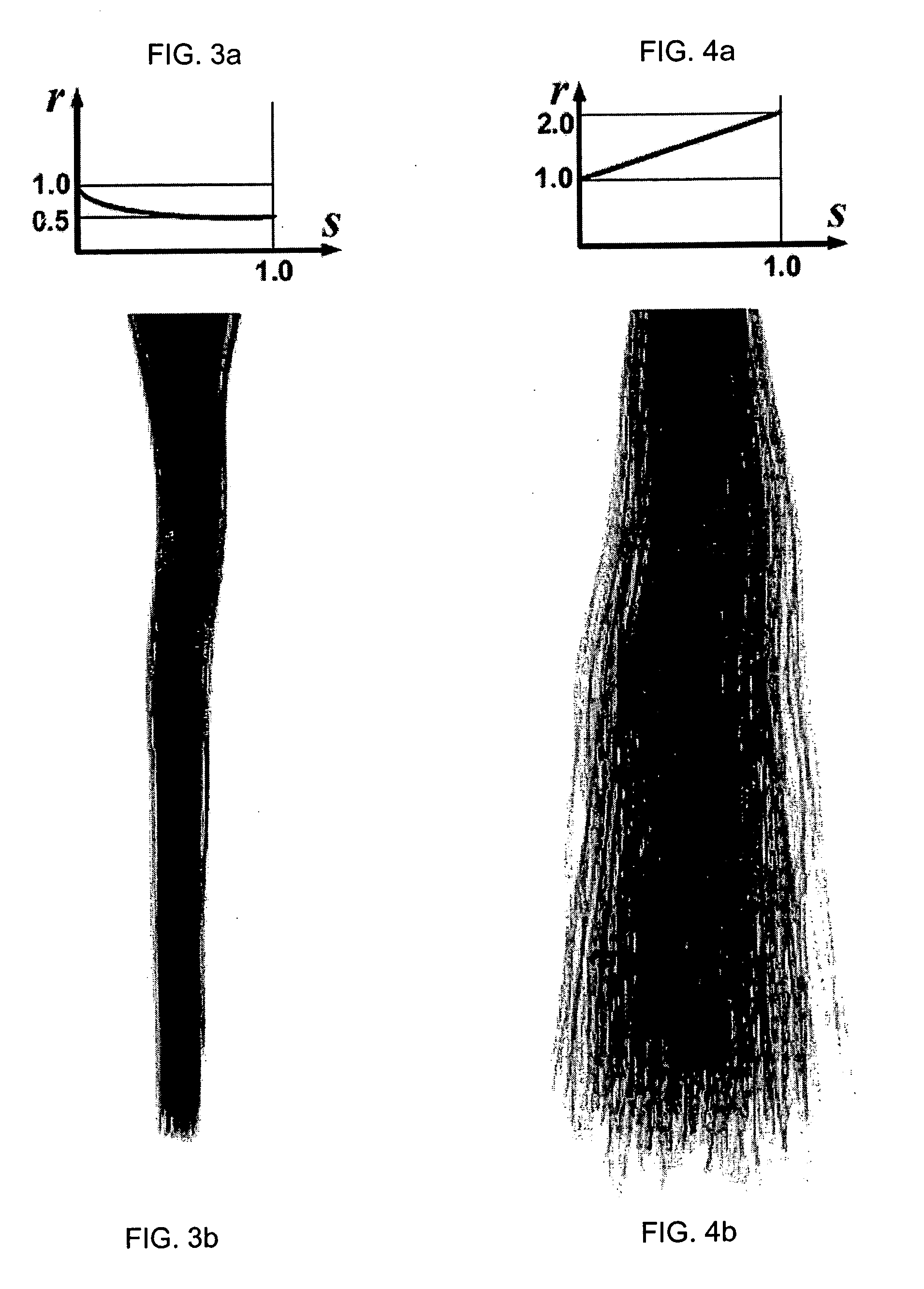Method and system for graphical hairstyle generation using statistical wisp model and pseudophysical approaches
a hairstyle and statistical technology, applied in the field of graphical hairstyle generation using statistical wisp model and pseudophysical approaches, can solve the problems of unnatural, over-the-counter computation, and method has a short turnaround time for modeling hairstyles, and achieve the effect of fast production of realistic hairstyles
- Summary
- Abstract
- Description
- Claims
- Application Information
AI Technical Summary
Benefits of technology
Problems solved by technology
Method used
Image
Examples
Embodiment Construction
[0089] 2. Statistical Wisp Model
[0090] It is readily observable that hair exhibits clustering behavior; a group of hair strands that are spatially close and geometrically similar is called a wisp. We view the task of synthesizing a hairstyle as generating a collection of wisps. This section describes how we generate the hair strands and wisps by controlling the statistical properties of hair.
[0091] 2.1 Wisp Modeling
[0092] Our wisp model consists of a master strand 10 and numerous member strands 20, and the overall shape of the wisp is a generalized cylinder. This section describes the wisp generation algorithm under the assumption that the geometry of the master strand 10 is given; the method for generating the master strand 10 is presented in Section 2.2.
[0093] We represent a strand as a Catmull-Rom spline, which is defined by and passes through a sequence of control points {p1,p2, . . . ,pn}. The spline p(s) is parameterized within the range [0,1], so that p(0)=p1 and p(1)=pn ...
PUM
 Login to View More
Login to View More Abstract
Description
Claims
Application Information
 Login to View More
Login to View More - R&D
- Intellectual Property
- Life Sciences
- Materials
- Tech Scout
- Unparalleled Data Quality
- Higher Quality Content
- 60% Fewer Hallucinations
Browse by: Latest US Patents, China's latest patents, Technical Efficacy Thesaurus, Application Domain, Technology Topic, Popular Technical Reports.
© 2025 PatSnap. All rights reserved.Legal|Privacy policy|Modern Slavery Act Transparency Statement|Sitemap|About US| Contact US: help@patsnap.com



